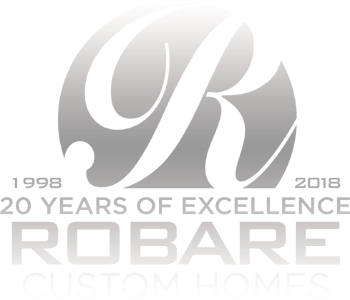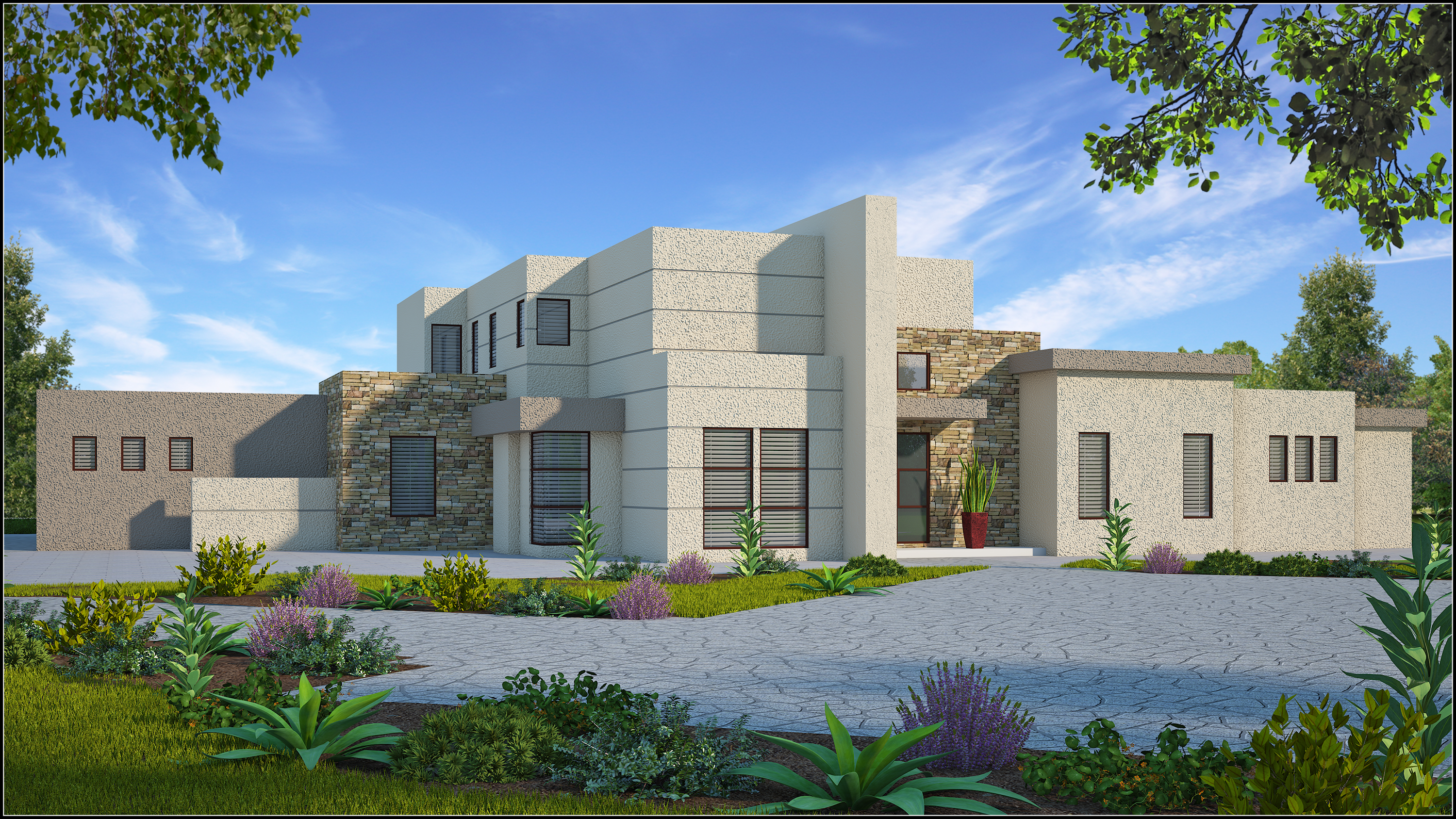
28 Feb Modern? Contemporary? What’s the Difference?
If you’ve been around the design scene for any time at all, you’ve no doubt heard the words “contemporary” and “modern” used often enough to describe architecture, furniture, and overall home style and design. Is there a difference between the two? Absolutely. Although contemporary and modern terms have overlapping characteristics these days, the two style genres have different histories and different methods.
“Contemporary” architecture and style is, literally, what is being created and produced right now. It is dynamic, meaning it’s constantly changing. It can be quite eclectic for this reason – contemporary style isn’t tied down to one specific style – it’s of the moment and borrows bits and pieces from a variety of styles and eras.
“Modern” style describes a static (era-specific) design style that breaks with those pre-Industrial Revolution traditional styles. Simply put, modern design is connected to the age of machination and is typically referred to of that of the 1920s-1950s (although some make the case that modern design refers to anything from the 20th Century).
One reason these two terms are used interchangeably, and, perhaps, confusingly, is because many of the characteristics and elements of modern design (a.k.a. mid-century modern or retro) are popular right now. Thus, modern design is in integral part of Contemporary design. We’ll see in 20 years what the new contemporary style is! Here are some examples of modern vs. contemporary designs:
Modern: Clean-Lined Architecture.
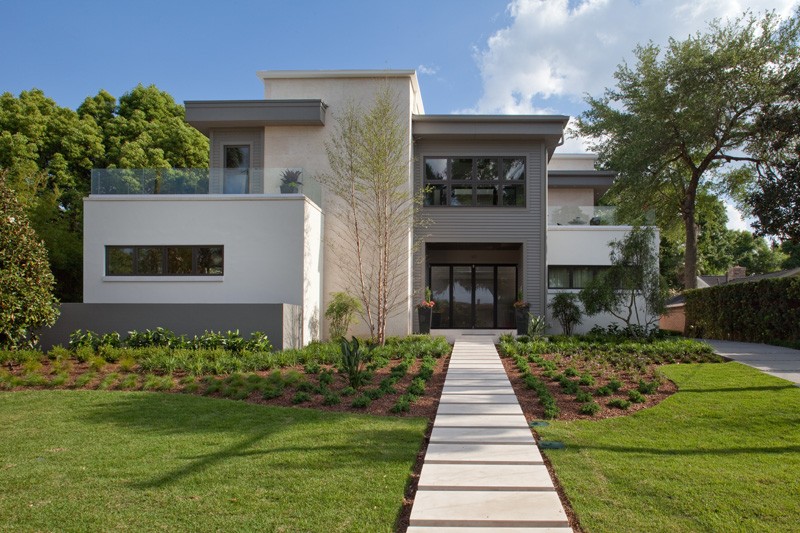
Modern architecture incorporates glass windows where walls would traditionally have existed (note the corner windows here), whitewash or white stucco, and intentional asymmetry. Flat roofs and distinct right angles are inherent in modern architecture as well.
Contemporary: Understated but Significant Architecture.
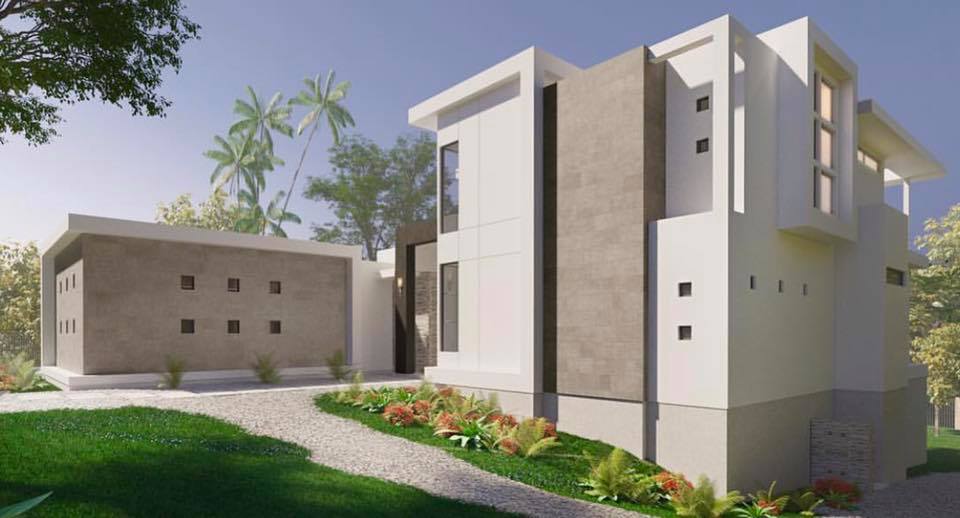
Similar to modern architecture, this contemporary home has a flat roof and a boxy feel.
Modern: Clean Interiors.
Modern design is born from a vantage point of trying hard to break from tradition. Traditional spaces tend to be full, both visually and physically. Modern spaces, on the other hand, embrace simplicity in adornment. Modern interiors are clean and fresh, perhaps with a hint or two of color added.
Contemporary: Open Floor Plan.

Carrying through the desire for an inherent feeling of spaciousness in a contemporary space is the inclusion of an open floor plan. Kitchen merges with dining merges with living. The effect is simultaneously airy and comfortably livable.
Modern: Natural Materials.
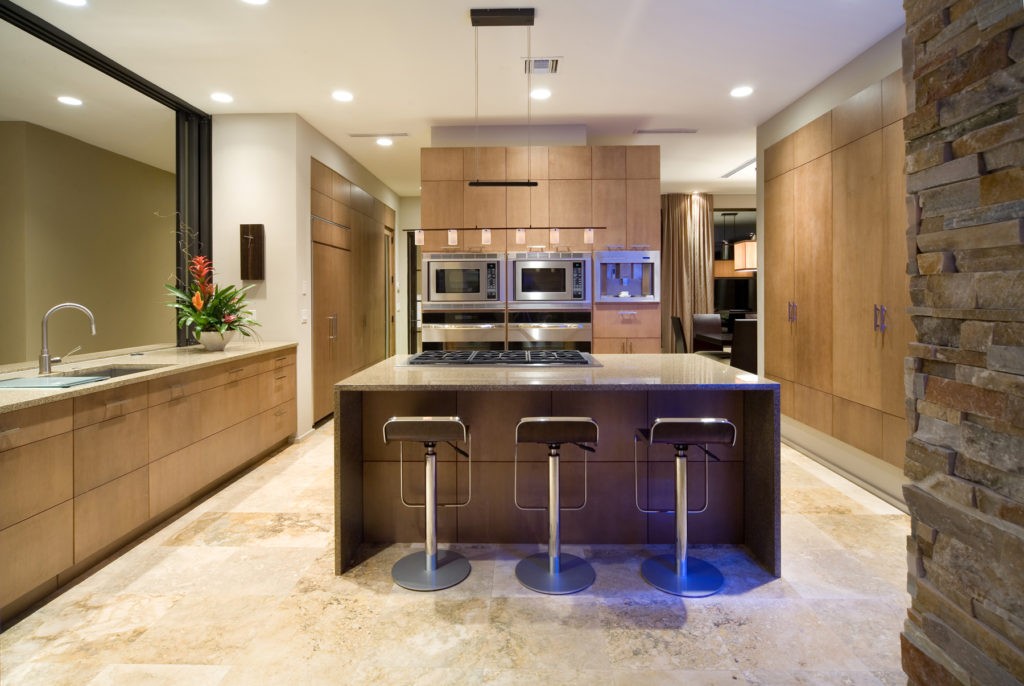
Perhaps so as to keep the streamlined look and feel of a modern space from feeling clinical, modern style incorporates plenty of natural materials. These include wood, stone, leather, teak, and even linen – all materials that quietly provide warmth and texture to a space without detracting from the overall feel.
Contemporary: Natural Materials.
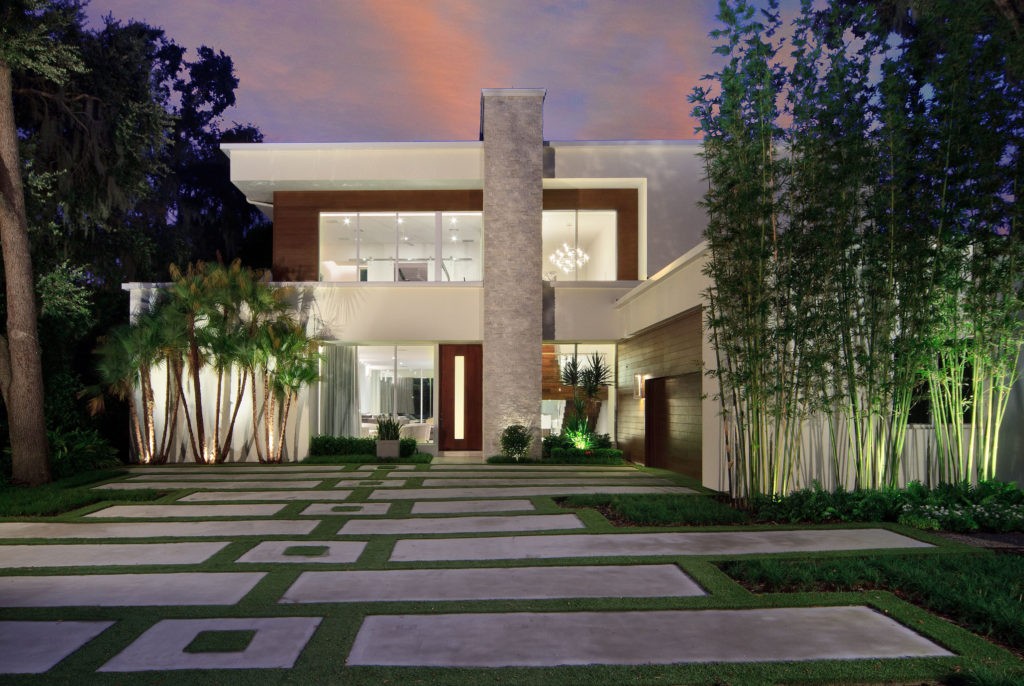
Contemporary design embraces a balanced use of natural materials, such as cedar and stone. These natural finishes are often mixed with steel, concrete, and other industrial-inspired materials to provide an aesthetic balance of yin and yang.
Modern: White Walls.
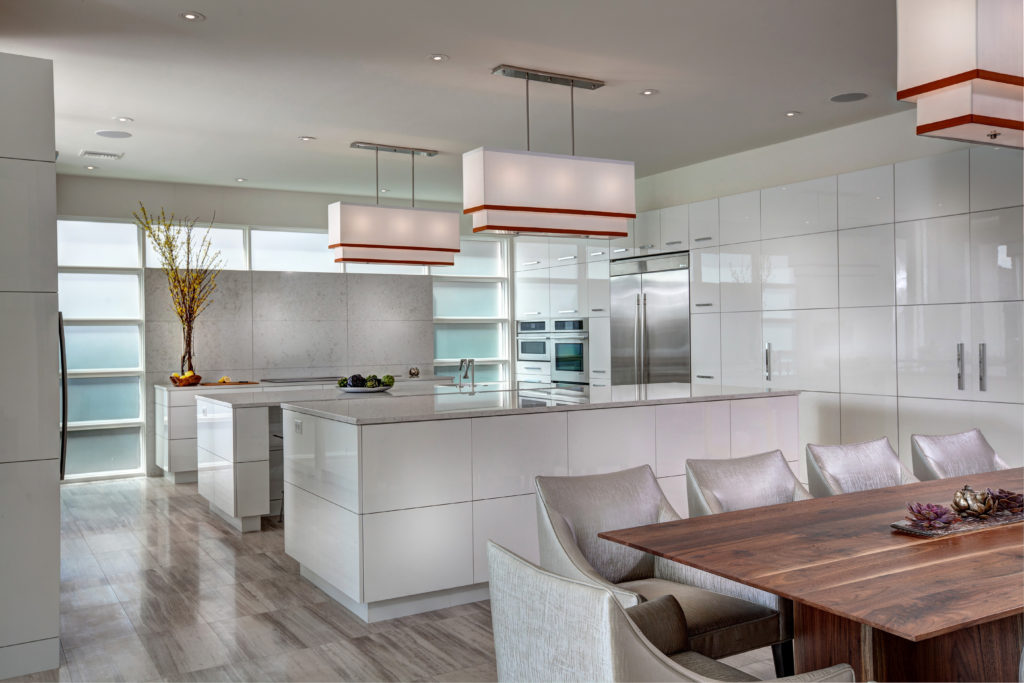 White walls can sometimes get a bad rap as being a non-color, or a boring default wall choice. This is not necessarily so! In a modern space, white walls are crisp, clean, and fresh. They enhance the details of the room itself without drawing attention to themselves. White walls expand the modern space and, overall, are a beautiful foundation for great design.
White walls can sometimes get a bad rap as being a non-color, or a boring default wall choice. This is not necessarily so! In a modern space, white walls are crisp, clean, and fresh. They enhance the details of the room itself without drawing attention to themselves. White walls expand the modern space and, overall, are a beautiful foundation for great design.
Contemporary: Large Windows.
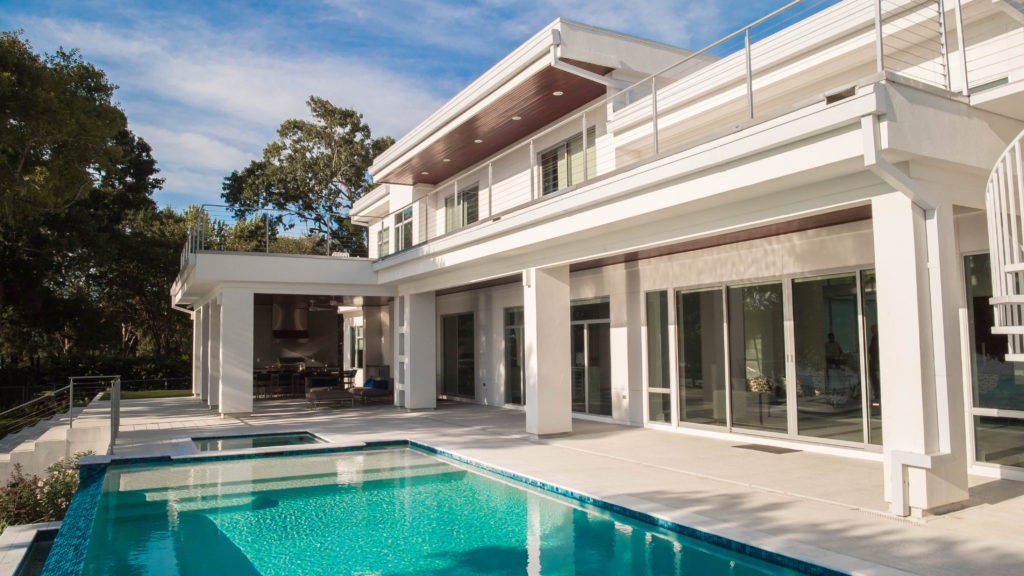 Large windows provide plenty of natural light into a space, thus infusing it with a sense of cheerful spaciousness. They brighten and lighten a space even with visually heavy details, such as this wood beamed ceiling. Bonus: The outside views can play a key role in the inside room’s color palette.
Large windows provide plenty of natural light into a space, thus infusing it with a sense of cheerful spaciousness. They brighten and lighten a space even with visually heavy details, such as this wood beamed ceiling. Bonus: The outside views can play a key role in the inside room’s color palette.
Modern: Bare Floors.
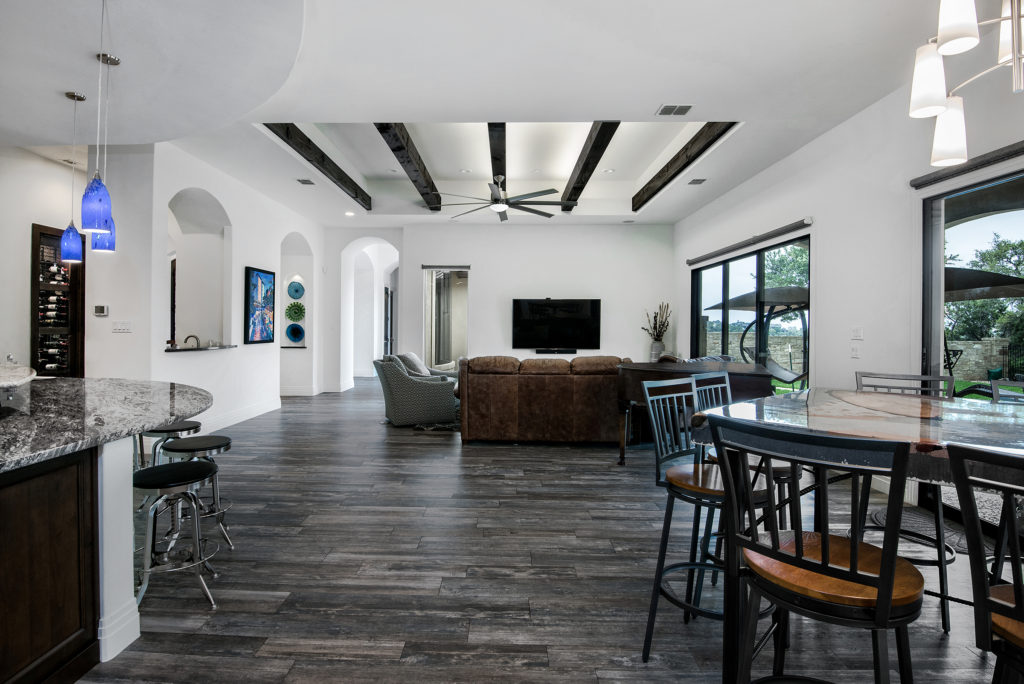 Bare floors are part of modern design’s less-is-more mantra. Of course, sometimes area rugs are used in a modern space, but they are usually a neutral tone and made of natural materials (e.g., wool, jute, sisal).
Bare floors are part of modern design’s less-is-more mantra. Of course, sometimes area rugs are used in a modern space, but they are usually a neutral tone and made of natural materials (e.g., wool, jute, sisal).
Contemporary: Seamless Interior/Exterior Transitions.
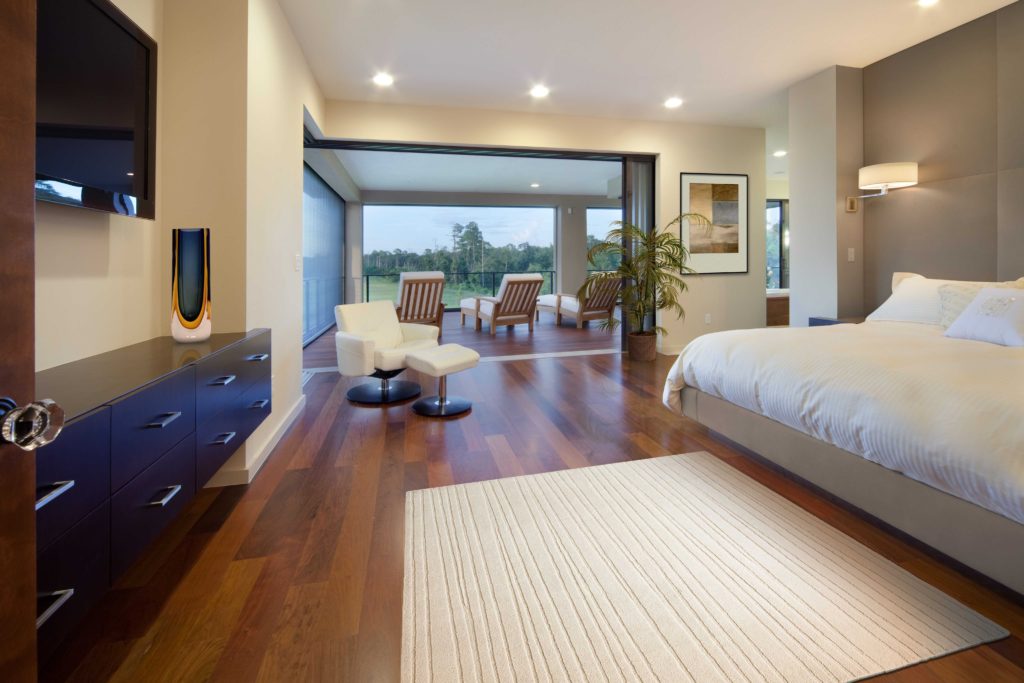
Large windows also play a key role in aiding one of the contemporary delights of bringing the outside inside. This creates a balance and harmonious combination of manmade and nature…one of contemporary design’s favorite combinations.
Modern: Plywood, Plastic, & Polished Metal.
Modern furniture, accessories, and even architectural details incorporate materials that stem from the industrial age. Some easily recognizable examples include iconic chairs of molded plastic, wood credenzas, and furniture legs of polished metal, to name just a few.
Contemporary: Emphasis on Comfort.
Contemporary style eschews sterile, stark environments (which ultra-modern spaces can sometimes lean toward) and instead embraces stylish comfort. Aesthetic functionality of contemporary spaces include, but are certainly not limited to, soft rugs or floor coverings, throw pillows and blankets, and interesting and artistic accessories.
If you want to build a modern & contemporary home in the Greater San Antonio area, contact Robare Custom Homes to schedule a builder interview today.

